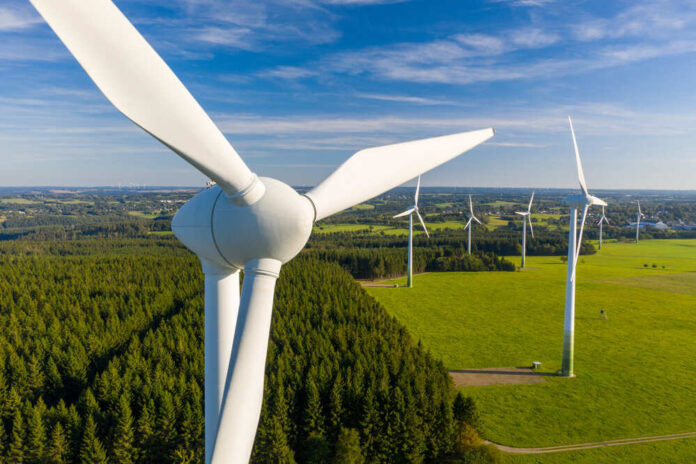
Wind turbines have been around since ancient times, but it wasn’t until the latter half of the 20th century that modern wind power generation gained traction. Today, they are a significant contributor to renewable energy production worldwide. If you’ve been wondering what they REALLY do, let’s delve into the process of how wind turbines are built and explore their inner workings to generate electricity using a natural resource: the wind.
Design and Construction Process
Wind turbine development begins with meticulous design to optimize efficiency, safety, and ease of maintenance. Here’s a glimpse into its construction process:
- a) Foundation: The turbine needs a sturdy base to support the entire structure. This often involves digging deep into the ground and reinforcing it with concrete. Some wind farms are built on former oil rig platforms, saving time and money.
- b) Tower Assembly: A steel or aluminum tower rises from the foundation, reaching heights up to 400 feet.
- c) Nacelle Installation: The nacelle, a box-like structure housing key components such as a gearbox, generator, and brakes, is hoisted onto the tower. It contains the vital parts needed to convert wind energy into electricity.
- d) Blade Assembly: Large blades made from fiberglass reinforced with resin are transported to the site in pieces and then bolted together on the nacelle. The blades, which can span up to 200 feet, capture the wind’s kinetic energy as it passes through.
- e) Electrical Connection: Once the turbine is complete, electrical connections are made between the nacelle and tower, linking them to the existing power grid or battery storage system.
- f) Commissioning and Testing: The final stage involves testing the turbine for optimal performance and safety. Wind speed, noise levels, and vibrations are monitored during this period. Once approval is granted, the wind farm begins producing electricity.
How Wind Turbines Work
Wind turbines work by harnessing the kinetic energy in the wind and converting it into mechanical energy through the rotating blades.
There are a few steps involved with the conversion process.
- Capturing Wind Energy: As wind flows across the blades, it exerts pressure on their surface area, causing them to rotate around a horizontal axis. The faster the wind speed, the more power generated by the turbine.
- Gearbox Transmission: Within the nacelle, a gearbox connects the slow-turning blades to a high-speed shaft connected to the generator. This reduces the rotational speed while increasing the torque, making it suitable for the generator’s requirements.
- Generating Electricity: The spinning shaft inside the generator is connected to magnets, which produce an alternating current (AC) electrical voltage. As the shaft spins, the magnetic field changes, inducing an electric current in the wires wrapped around the stator. This process repeats itself as long as there’s wind and the turbine operates efficiently.
- Power Conditioning and Transmission: The generated AC power is converted to a higher voltage using transformers within the nacelle for efficient transmission through power lines to the substation. Here, it’s transformed back into a lower voltage suitable for distribution to homes and businesses.
- Grid Integration: Once connected to the power grid, excess electricity produced by the wind turbine can be stored in batteries or sold back to the utility company during peak demand periods. This ensures a stable supply of renewable energy while balancing fluctuations caused by variable wind speeds.
Wind turbines have come a long way since their inception, revolutionizing our approach to sustainable energy production. As technology continues to advance, we can expect even more efficient and reliable designs that contribute towards reducing greenhouse gas emissions and mitigating climate change.
Now, if you see a wind turbine farm, you can stare at it in awe, knowing just what it is capable of doing for your local energy grid.














